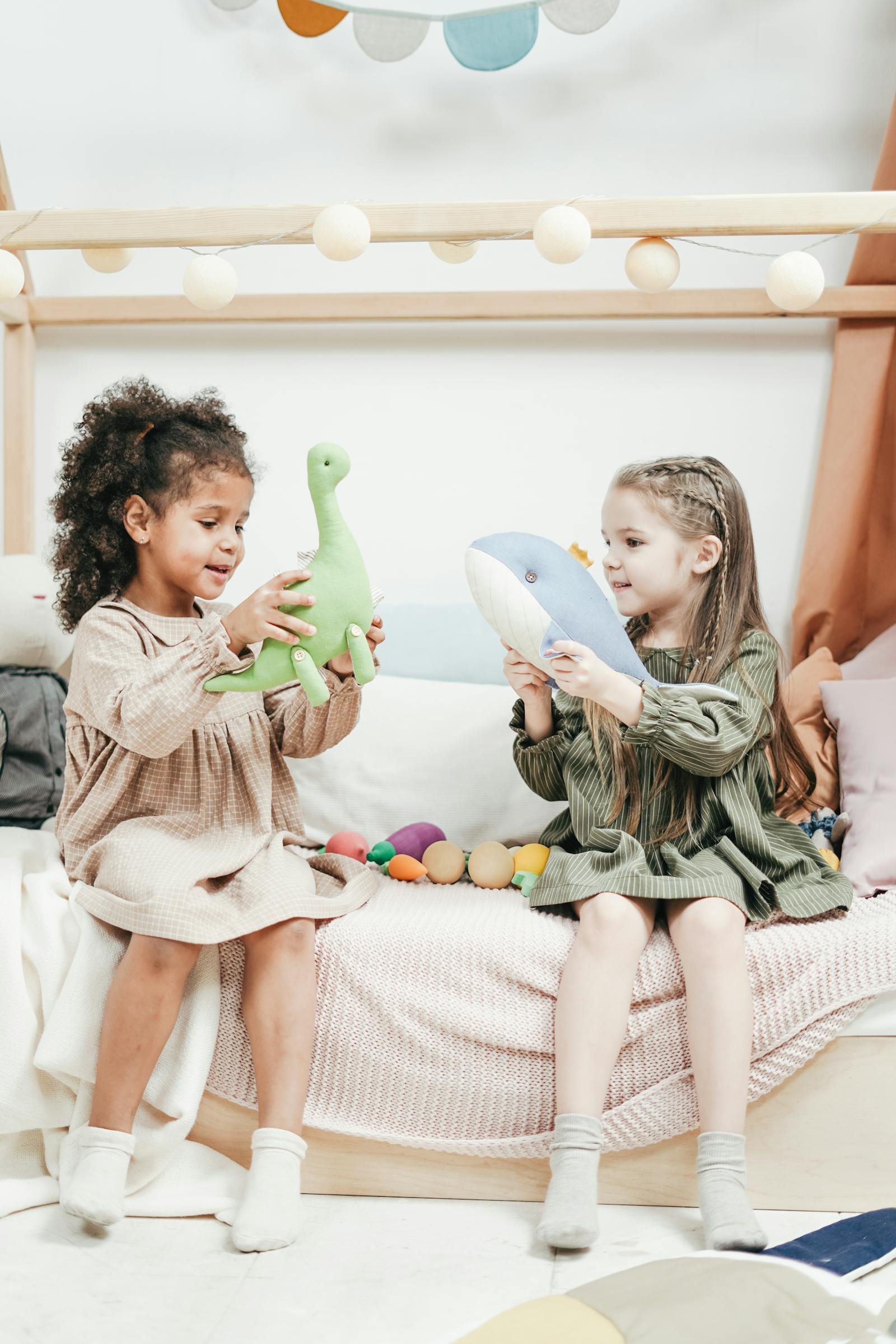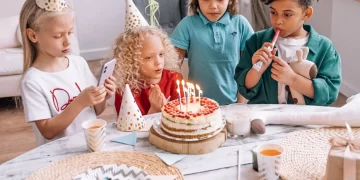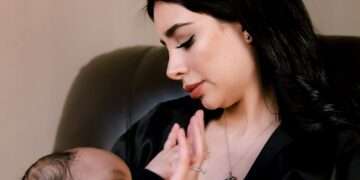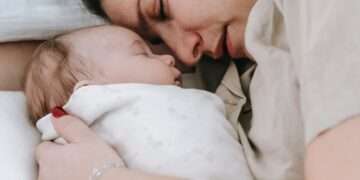
The Best Toys are a vital part of any child’s life. They can be used for learning and to teach children about the world around them. Toys should be safe and fun but also match the child’s developmental stage of play. After all, toys that excite infants (like rattles or activity boards) don’t have the same benefits for toddlers. And many toys for 3-year-olds, such as tricycles or fake musical instruments, simply won’t work for an 8-year-old.
If you’re like most parents, and want to make sure your kids have the best toys. But with so many options available, it can be tough to know which ones to choose. Not to worry – here are some tips to help you select the best toys for your kids. The best toys are those that are age-appropriate and benefit your kid in multiple ways. Make sure to choose toys that are appropriate for your child’s age, interests, and abilities.
Selecting the best toys for children involves considering their ages, interests, and developmental needs. What’s the best toy for an infant ages? What toy should you get a toddler or school-aged child? Check out our list that matches the developmental stages of play with toys that work well for each age group.
Best Toys for Babies (0- to 12-Months)
For the first three months, your baby isn’t able to do much more than observe their surroundings. Because their vision is still blurry, they see bright, boldly patterned items best. “Toys don’t have to be black and white so long as the colors contrast with each other,” says Nora Newcombe, Ph.D., a developmental psychologist at Temple University in Philadelphia and president of the International Mind, Brain, and Education Society.
As your baby grows, they’ll enjoy toys that engage their other senses as well. Many of the toys they need now are designed to promote interaction in a variety of ways: They may squeak or make a crinkling noise, have a nubby texture, or be soft and cuddly. Infants tend to mouth toys, and textured ones can help relieve teething pain.
Top toys for babies
- Brightly colored, multi-patterned mobiles
- Rattles
- Unbreakable mirrors
- Floor gyms
- Activity boards
- Soft, washable, colorful stuffed animals or dolls with a smiling face
- Small stuffed fabric balls
Best Toys for 1-Year-Olds
“Your toddler is fascinated by cause-and-effect and will enjoy any toy that responds to their actions and makes use of their newly acquired motor skills,” says Robin Goodman, Ph.D., a clinical psychologist based in New York City. Little ones will love toys that allow them to hit a ball with a hammer or those that cause music to play or characters to pop up.
Some high-tech children’s toys aimed at this age will name a letter, shape, or number whenever a baby presses a button. At this age, your baby is still too young to learn their ABCs, but they’ll enjoy interacting with such toys and being exposed to language.
Top toys for 1-year-olds
- Stacking rings
- Nesting cups or boxes
- Push- or pull-toys that make noise or have pieces that pop up or move
- Hammering sets that let kids pound pegs or balls through holes
- Simple, sturdy musical instruments such as tambourines, drums, or maracas
- Shape sorters
- Play vehicles such as a school bus or a fire engine, and plastic people that ride in them
- Puzzles with four or five pieces
- Rubber ducks or toy boats
Best Toys for 2- and 3-Year-Olds
Looking for the best 2-year-old toys or the best 3-year-old toys for your baby? At this age, a child’s play is more purposeful, and they have the fine motor skills needed to complete a puzzle or build with blocks by themselves. They’ll start to enjoy pretend play that imitates the actions of people around them. They will also like high-tech toys that make real-life sounds, such as telephones that ring or dolls that talk.
If you avoid gender stereotypes at home, don’t be concerned if your cisgender child plays in a gendered way, adds Dr. Newcombe. Babies assigned male at birth may love using dump trucks to scoop up sand, while those assigned female may pretend to feed their dolls—or the opposite may be true. No matter what gender they are, let them play with the toys they choose.
Kids remain very active at this age; most of them still enjoy push-and-pull toys. It’s a great time to introduce a ride-on toy, too: Start with one that your child can propel with both feet and move up to a tricycle or balance bike.
Top toys for 2- and 3-year-olds
- Dolls and stuffed animals
- Props for make-believe play, such as a toy telephone, a tea-party set, a play kitchen, or a doll stroller
- Ride-on toys, tricycles, and balance bikes
- Musical instruments (popular ones include toy pianos with flashing lights that show kids what keys to press)
- Large transportation toys with buttons that make a horn honk or a siren whistle
- Puzzles
- Construction toys that snap together
Best Toys for 4- and 5-Year-Olds
There’s a tremendous explosion in learning ability at this age, and it’s a good time to introduce interactive educational toys that teach math and verbal skills, such as phonics boards or tablets with parent-approved games.
“Choose toys that say positive things like ‘Good job. Let’s try again’ instead of ones that make negative beeping noises whenever kids get an answer wrong,” suggests Marianne Szymanski, founder of Toy Tips, an independent toy testing and review service for consumers.
Kids are now able to imagine that they are someone else and may fantasize about being teachers, pilots, ballerinas, athletes, fairies, or anything they like!
Top toys for 4- and 5-year-olds
- Art supplies, craft kits, Play-Doh
- Blocks of different shapes
- Computerized toys that teach phonics, reading, or math
- Construction sets with large pieces, such as Magna Tiles, Legos, or fort-building kits
- Puzzles of greater complexity
- Action figures
- Barbies and other dolls
- Costumes
- Transportation toys, such as parking garages, airports, and train stations
- Board games that don’t require reading, such as Hungry Hungry Hippos, Chutes and Ladders, or Candy Land
- Soccer balls and basketball
- Active games such as Jenga or The Floor Is Lava
- Bicycles (with training wheels)
Best Toys for 6- and 7-Year-Olds
Your child is gradually developing their own interests now but is still influenced by their teachers and peers. Some kids like doing science experiments (with help); others love painting crafts, making beaded jewelry, or playing with dolls. Friends are becoming increasingly important, and your child will start asking for a particular toy (if they haven’t already) because “everyone else has it.”
At this age, kids often become huge fans of computer games, but they also enjoy having friends over to play sports and board games and build things. Many of them enjoy music-related toys, but playing actual instruments can be difficult. (If your kids’ toys require batteries, be sure to keep a stash of long-lasting AA and AAA in the house!)
Top toys for 6- and 7-year-olds
- Basic science kits
- Slime
- Magnets, magnifying glasses, telescopes
- Art supplies and craft kits
- Nintendo, PlayStation, or Xbox games
- Computer tablets
- Legos, Magna Tiles, and other building sets
- Sports equipment
- Remote-control cars
- Babies and similar dolls
- Games that require strategies, such as chess, checkers, or Jenga
Best Toys for 8-Year-Olds and Beyond
Many 8-year-old children enjoy outdoor sports as well as scooters, bicycles, and in-line skates. They acquire adult-like interests, abilities, and hobbies and may develop a particular passion or become a collector. Many of them enjoy creating things, and they find competitive games of all types irresistible.
“These years are all about doing things that give kids a sense of mastery and competence,” says Szymanski. “With computer and video games, kids can challenge themselves to get a better score than they did the time before. They enjoy competing with their friends, and you’ll hear a lot of ‘I got this score—what score did you get?'” Children are also increasingly able to work on longer projects, some of which might take days to complete.
Top toys for 8-year-olds and beyond children
- More elaborate science kits
- Tablet or computer for online games
- Nintendo, PlayStation, and Xbox games
- Craft kits
- Slime
- Outdoor sporting equipment
- Intricate construction sets
- Board games such as Scrabble, Monopoly, and Trivial Pursuit Junior
- Strategy games such as chess, checkers, or Jenga
- Bananagrams
- Model kits
Here are some of the best types of toys for children:
- Building Blocks and Construction Sets: Toys like LEGO, Mega Bloks, and wooden building blocks encourage creativity, problem-solving, and fine motor skills.
- Educational Toys: These toys can teach a wide range of subjects, from math and science to language and geography. Look for age-appropriate educational games, puzzles, and interactive toys.
- Arts and Crafts Supplies: Crayons, markers, colored pencils, paper, and craft kits promote artistic expression, fine motor skills, and imaginative play.
- Books: Reading is essential for children’s language development. Choose a variety of books that match your child’s reading level and interests.
- Puzzles: Puzzles come in various levels of difficulty and help with problem-solving, spatial reasoning, and patience.
- Board Games and Card Games: Games like Scrabble, Monopoly, and Uno teach vocabulary, math, and strategic thinking, all while having fun.
- Outdoor Toys: Encourage physical activity with toys like balls, bicycles, jump ropes, and playground equipment. Outdoor play promotes fitness and a love for the outdoors.
- Musical Instruments: Instruments like keyboards, xylophones, and drums introduce children to the world of music, promoting rhythm, creativity, and emotional expression.
- Dolls and Action Figures: These toys allow for imaginative role-playing and storytelling, helping children develop empathy and social skills.
- Science Kits: Kits for chemistry, physics, and nature exploration spark an interest in STEM subjects while providing hands-on learning experiences.
- Dress-Up and Pretend Play: Costumes, props, and playsets enable children to use their imaginations and engage in role-play. This type of play fosters creativity and social development.
- Building and Construction Toys: Toys like train sets, marble runs, and magnetic building kits promote problem-solving and spatial awareness.
- Stuffed Animals and Plush Toys: These toys offer comfort and companionship while helping children express emotions and develop nurturing skills.
- Ride-On Toys: Tricycles, scooters, pedal cars, and balance bikes encourage physical activity and coordination.
- Sensory Toys: Toys with different textures, shapes, and sounds stimulate a child’s senses and can be particularly beneficial for those with sensory processing needs.
- Educational Apps and Tech Toys: Well-designed educational apps and tech toys offer interactive learning experiences, covering various subjects like math, science, and language.
- Collectibles: Items like trading cards, figurines, and collectible sets can develop a child’s sense of organization, negotiation, and the joy of collecting.
Remember that the best toys for your child depend on their individual interests and developmental stage. Safety considerations are crucial, and engaging in play with your child can make the experience more enjoyable and educational.
How to Choose The Best Toys For Your Children
Choosing the best toys for your children involves considering their age, interests, and developmental needs. Regarding your child’s development, entertainment, and well-being, toys are one of the most popular, indispensable parts of a child’s life. But, as a parent, other than safety and stimulation, there are a few things to consider when choosing toys for your children. Here are some things to remember when purchasing a toy for your children.
Make Sure Toys Are Age-Appropriate
Ensure the toy is suitable for your child’s age and stage of development. Most toys come with recommended age ranges to guide you. When buying toys for your children, the single most important thing that you can do is make sure that you get toys that are age-appropriate. For example, if you have a newborn to an infant-age child, you wouldn’t want to give them toys that would overstimulate them. At the same time, for older children, you wouldn’t want to give them toys that aren’t meant for them – ones that are too simple and boring. So, it is essential to get toys that are appropriate for both their development and their age.
Keep Your Child’s Interests in Mind
Are you looking to make sure your child explores and learns new things? Next to ensuring the toys, you get your children are age-appropriate, keeping your child’s interests in mind is also essential. You do this by ensuring you stick with a theme that interests them. So, remember, when buying toys for your young child, make sure you choose a toy that will capture their attention!
Make Sure Toys Are Safe
Safety should be your top concern. Look for toys that meet safety standards and have no small parts that could be choking hazards. Since children put everything in their mouths, especially infants and toddlers, it is essential always to consider how safe a toy is before giving it to your children. When buying a toy, here are some important safety questions to research before purchasing.
First, is the toy age-appropriate – you can find this out by checking the tag or packaging of the toy. Second, are the toys made up of non-toxic and non-combustible materials? Third, does the toy have detachable pieces – detachable toys make for choking hazards. And finally, are all the parts secured with screws if they are battery-operated?
Identify Your Child’s Interests: Pay attention to your child’s likes and dislikes. What are they passionate about? Whether it’s animals, vehicles, art, or science, choosing toys that align with their interests keeps them engaged and excited.
Promote Educational Value: Look for toys that combine fun with learning. Educational toys can help your child develop important skills. Puzzles, building sets, and board games often have cognitive and educational benefits.
Encourage Creativity: Choose toys that encourage imaginative play. Items like building blocks, art supplies, or pretend play toys allow children to use their creativity and problem-solving skills.
Consider Diversity of Play: Offer a variety of toys to stimulate different types of play. Include toys for physical activity, artistic expression, cognitive development, and social interaction. A well-rounded selection fosters holistic development.
Engage in Social Play: Consider toys that promote social interaction, cooperation, and communication. Board games, cooperative games, and toys that require teamwork help children develop social skills.
Supervise and Participate: Be involved in your child’s play, especially with younger children. Engage in their play, ask questions, and be a part of their imaginative world. Your participation can make playtime more meaningful.
Choose Toys That Enrich the Different Senses
Especially at a young age, one of the best ways to encourage development is using sensory toys – toys that enrich the different senses (sight, sound, smell, taste, and touch). Not only are these toys entertaining, but they can also help stimulate your child’s nervous system with their bright colors and sounds. There are many different toys out there that can help promote your child’s senses. Before buying a toy, look at your child and their favorite senses. This information will help you find the perfect toys to nurture your child’s senses – this will help you develop their cognitive, language, gross, and motor skills.
FAQ:
- Why is it important to choose the best toys designed for children of specific ages?
There are many toys and games that increase and heighten a child’s developmental skills and abilities including physical, cognitive, social, and emotional development. Choosing the right toy or game can increase independence, creativity, and curiosity while exploring problem-solving, feelings, and social interactions.
2. Why are toys important?
Toys nurture children’s cognitive development during the most important childhood years. Toys stimulate concentration levels and enhance attention span and memory. In turn, cognitive development during the childhood years improves children’s ability to approach language and math skills in a fun way.
3. Why are toys good for learning?
Educational toys will usually enhance a child’s learning by developing their logic and problem-solving skills, encouraging communication skills, refining motor skills, and nurturing their creativity.
Conclusion: In summary, the best toys for your children are those that cater to their age, interests, and developmental needs. Safety and educational value should always be priorities, and your involvement in their play can enhance the experience.
If you’re purchasing toys for a child in your life, check out our kidsmodelista shop, which explains which toys best suit each developmental stage.


































